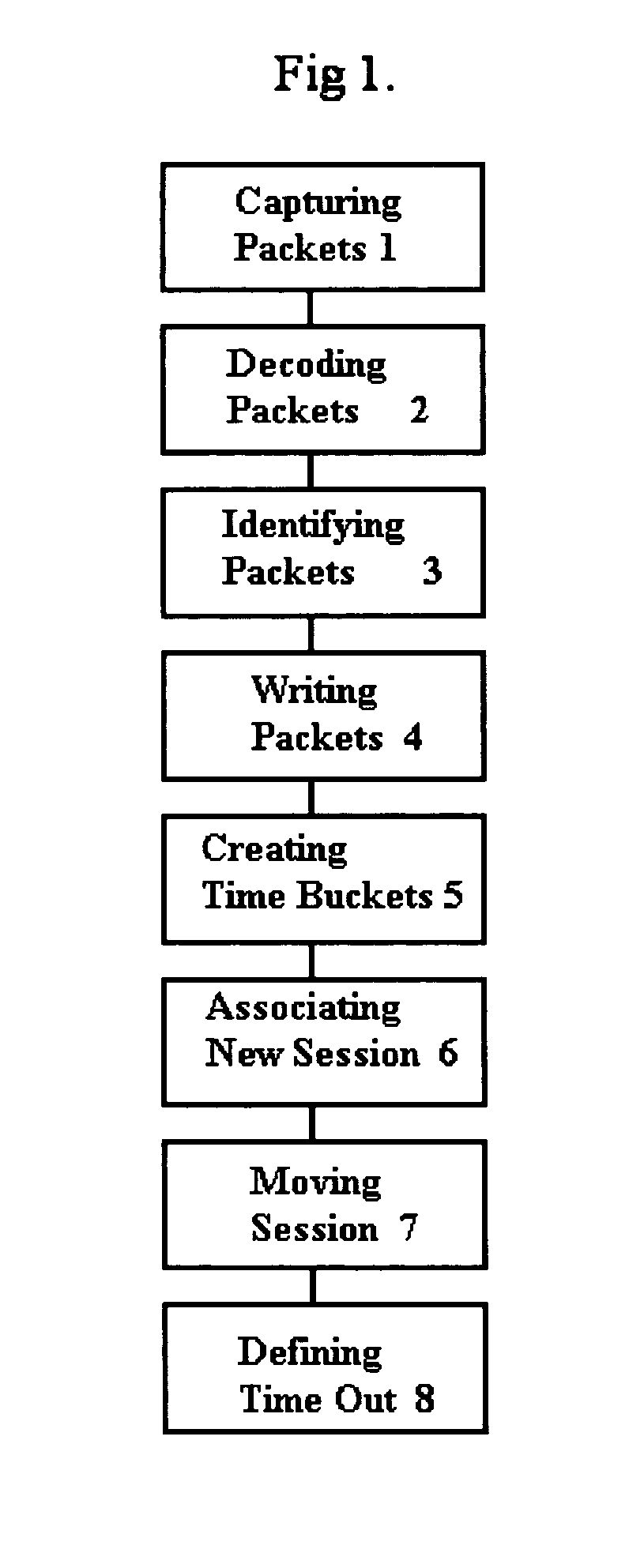Packet flow monitoring tool and method
a technology of information flow and monitoring tool, applied in the field of methods and techniques for monitoring the flow of information, can solve the problems of user's computer, difficult access to acceptable information that is available, and the user of that information's communication of information with the outside world
- Summary
- Abstract
- Description
- Claims
- Application Information
AI Technical Summary
Benefits of technology
Problems solved by technology
Method used
Image
Examples
Embodiment Construction
[0021]For the purposes of promoting an understanding of the principles of the invention, reference a project was completed which demonstrated a preferred embodiment of the present invention. The project is described below, where the following terms are defined as follows:
[0022]“Flow” and “IP flow” means any IP packet stream between the same set of IP addresses and ports with the same IP protocol type. “CF” means Continuing Fragments. The CF flag is set to indicate that it is not the first record in the flow. “MF” means more fragments. In the first record of a long flow, the MF flag is set to indicate that there are more records related to this record. The MF flag is also set unless the session is timing out due to the Session Inactivity Timeout (SIT) value.
[0023]The project which demonstrated the present invention can generally be described as sensor software. The specific program was written as a narrow focus, single purpose tool used to monitor IP packet flows, and was named “Flo”...
PUM
 Login to View More
Login to View More Abstract
Description
Claims
Application Information
 Login to View More
Login to View More - R&D
- Intellectual Property
- Life Sciences
- Materials
- Tech Scout
- Unparalleled Data Quality
- Higher Quality Content
- 60% Fewer Hallucinations
Browse by: Latest US Patents, China's latest patents, Technical Efficacy Thesaurus, Application Domain, Technology Topic, Popular Technical Reports.
© 2025 PatSnap. All rights reserved.Legal|Privacy policy|Modern Slavery Act Transparency Statement|Sitemap|About US| Contact US: help@patsnap.com


